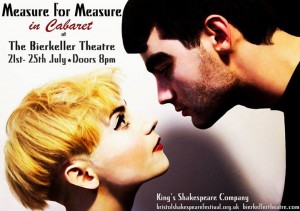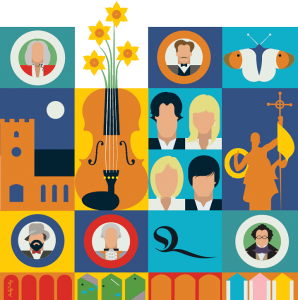I am reading Andrew Lownie’s fascinating new biography of Guy Burgess, member of the Soviet spy circle, the Cambridge Five. Lownie’s book contains something very curious. (I am reading a Kindle edition, so can only give chapter references.) In Chapter 20, Relationships, we read in paragraph 1:
In June 1945 [Peter] Pollock returned to Britain.”
Pollock had been away several years, fighting with the British Army in North Africa and in Italy, and having been captured and held as a POW in Italy. In Paragraph 4, we read:
That summer Pollock and Burgess had seen much of Brian Howard and his boyfriend, Sam, staying with the couple at their home in Tickerage, East Sussex. On one occasion, they had visited the elderly Lord Alfred Douglas in Brighton, as Burgess wanted to show off Pollock and prove he was even more attractive than the famously attractive Douglas in his youth. [Footnote 5]”
The source (footnote 5) is given as: “Pollock taped interview, by kind permission of Miranda Carter.” Pollock died in Tangier on 28 July 2001.
But, according to Wikipedia, Bosie Douglas died on 20 March 1945, so Pollock and Burgess could not have visited him in summer 1945.
Although the content of the book is superb, the book shows the weaknesses of a text written over a long period (30 years), together with some fairly mediocre editing. On several occasions, the author mentions something without explaining it, forgetting that what he knows is different to what the reader knows. Sometimes explanations are given at the second or later mention, instead of at the first. When Lownie mentions “Johnny Philipps, a rich gay bachelor who lived in Albany”, for example, he does not explain what or where is Albany. Only in a later chapter when talking of someone else do we learn that the Albany was “a fashionable set of apartments off Piccadilly.” Likewise, the Venona transcripts are mentioned in Chapter 26, but only explained in Chapter 28. At one point, we learn that Burgess earnt some GBP 800 pa from a Canadian Trust Fund (£800 in 1945 would be about £29K in 2024). Nothing is said about this fund, nor how Burgess came to be a beneficiary of it, although there is an earlier mention of a trip he took in 1930 with his mother and brother to visit Canada, before going up to Cambridge. The 1959 TV interview which Burgess gave to the Canadian Broadcasting Corporation, which was only rediscovered in 2015, the only TV interview he ever gave, is mentioned (at location 5566). But Lownie seems to have missed Burgess’ statement in that interview that, “I’m a quarter Canadian myself.” Which grandparent was Canadian? In Chapter 40, in another example, there is a throwaway reference to a Moscow party given by “the Burchetts”. Australians of a certain age would catch the reference to left-wing journalist Wilfred Burchett, who lived in Moscow in the 1950s, but who else would?
Another instance of poor editing is the description of Novodevichy Cemetery in Chapter 37. Burgess moved to a flat near the cemetery in 1956. Lownie describes the cemetery thus: “where amongst others were the graves of Chekhov, Gogol, Khrushchev, Prokofiev, Shostakovich, and Stalin’s wife . . . “. That “were” points to the time Burgess moved nearby. But, Khrushchev only died in 1971, and Shostakovich in 1975, both well after 1956; indeed, well after 1963, when Burgess himself died. I imagine that such poor editing must be an embarrassment to an author whose day job is acting as a literary agent for other authors. Or is Lownie another author confused about the working of tense in English?
And perhaps taking so long to write a non-fiction book means not enough advantage has been taken of the Web. For instance, is the young German actor named George Mikell mentioned in Chapter 26 the same person as the Lithuanian-Australian actor named George Mikell who has a website? Is the drifter of no fixed abode named James Turck mentioned in Chapter 29 the same James Turck (1924-2011) who acquired an MBA from Columbia and a seat on the American Stock Exchange? I find myself Googling every name mentioned, so I am surprised the author has not done so too.
Overall, the book is fascinating and riveting despite the sloppy writing and apparent lack of editing. Lownie makes a convincing case for the importance of Burgess as a Soviet agent, detailing the documents he was able to provide to his handlers at each stage of his career. Whether Burgess was MORE important than his fellow spies could not be assessed from a life of just one of them. My one major disappointment from the book was the absence of any discussion of the theory that one or more of the Cambridge Five were known to Britain’s senior spy-masters, long before their departures East, to be Soviet agents and were allowed to remain in place. If you want to deceive your enemy you need to communicate through channels your enemy will likely believe, and that may mean using their own loyal agents (or people they believe to be their loyal agents). Such channels are even more necessary if you mostly communicate to deceive but occasionally want, or may need, to send truthful messages.
Indeed, this hall of mirrors might even have further mirrors, if one or more of Burgess, Maclean, or Philby were themselves witting in this deception, and sacrificed their public reputations, their pensions, and their quiet English country-side retirements to serve the land of their birth even beyond their defection. Lots of Britons gave their lives to defend their country in WWII, so the Cambridge spies may have done similarly. To my mind, such knowing and self-sacrificing deception by these upper-class Englishmen, students of great public schools and habitués of fashionable London clubs, is immensely more plausible than any other explanation I have seen for their treason. Does MI6 hold secret medals for them all in a hidden safe in its Ziggurat-on-Thames?
PS (Added 2022-04-09)
In Donald Sinden’s autobiography (1982) we find confirmation of the date of death of Bosie Douglas: 20 March 1945 (see page 54). Sinden had befriended Douglas a few years earlier and was informed of his death by a telegram sent that same day by Edward Colman, with whom Douglas was living at the time. Sinden says that Douglas had moved from Brighton to Colman’s farm near Lancing some time before his death, so it is even less likely that Pollock visited Douglas in Brighton.
Reference:
Andrew Lownie [2015]: Stalin’s Englishman: The Lives of Guy Burgess. London, UK: Hodder & Stoughton.
Donald Sinden [1982]: A Touch of the Memoirs. Hodder & Stoughton.



